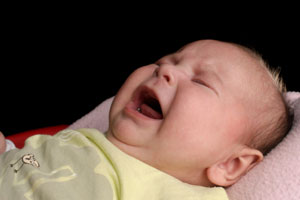Researchers from the Duke University Medical Center who analyzed
birth and educational records from North Carolina have found a
connection between induction or augmentation of childbirth and an
increased risk of autism being diagnosed during childhood.
The two interventions the researchers looked into were induction to stimulate uterine contractions and augmentation, which increases the strength, duration or frequency of uterine contractions.
The study, published in JAMA Pediatrics, is the result of researchers performing an analysis of over 625,000 live births and linking them with school records. Of these births, 5,500 children were documented as having autism.
The data came from the North Carolina Detailed Birth Record and Education Research databases. The scientists studied the material to discern whether induced births, augmented births or both were associated with increased chances of autism.

The researchers note that they accounted for autism risk factors that
are already known, such as socioeconomic status, health of the mother,
pregnancy-related events and birth year.
An additional finding was that the association the researchers found between inducing or augmenting labor and autism was more prevalent in male children.
One in 88 children in the US is diagnosed with autism spectrum disorder, which is why, the authors say, understanding external factors that may contribute to autism risk is important.
They cite exposure to oxytocin as a potential explanation for their findings, saying that 50-70% of women whose labors are induced receive an injection of this hormone.
The study concludes with a disclaimer that the results are not sufficient to recommend an alteration to obstetricians' current practices in induction and augmentation. However, the researchers do add:
The two interventions the researchers looked into were induction to stimulate uterine contractions and augmentation, which increases the strength, duration or frequency of uterine contractions.
The study, published in JAMA Pediatrics, is the result of researchers performing an analysis of over 625,000 live births and linking them with school records. Of these births, 5,500 children were documented as having autism.
The data came from the North Carolina Detailed Birth Record and Education Research databases. The scientists studied the material to discern whether induced births, augmented births or both were associated with increased chances of autism.
External factors and increased autism risk
Results show that compared with children who were born without induction or augmentation, children whose mothers did have one of the two types of assisted labors were more likely to be diagnosed with autism.
Children whose births were induced or augmented were more likely to be diagnosed with autism.
An additional finding was that the association the researchers found between inducing or augmenting labor and autism was more prevalent in male children.
One in 88 children in the US is diagnosed with autism spectrum disorder, which is why, the authors say, understanding external factors that may contribute to autism risk is important.
They cite exposure to oxytocin as a potential explanation for their findings, saying that 50-70% of women whose labors are induced receive an injection of this hormone.
The study concludes with a disclaimer that the results are not sufficient to recommend an alteration to obstetricians' current practices in induction and augmentation. However, the researchers do add:
"While these results are interesting, further investigation is needed to differentiate among potential explanations of the association, including underlying pregnancy conditions requiring the eventual need to induce/augment, the events of labor and delivery...and the specific treatments and dosing used."Scientists have recently developed a "motion sensor" that could help diagnose and treat autism.













0 comments:
Post a Comment